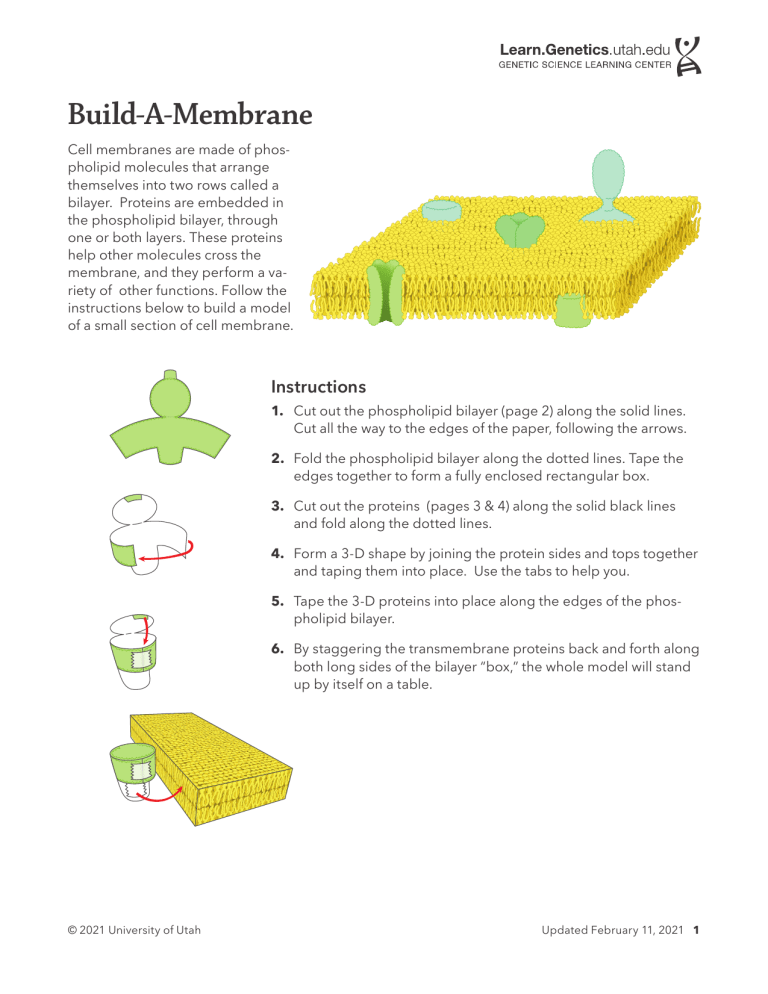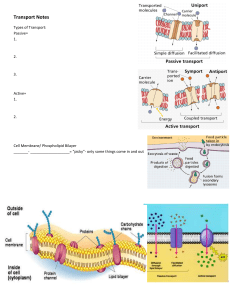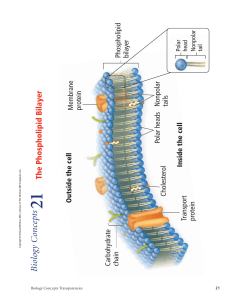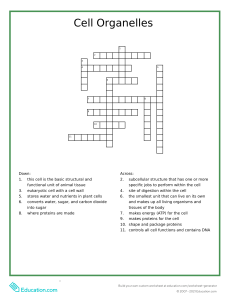
Build-A-Membrane Cell membranes are made of phospholipid molecules that arrange themselves into two rows called a bilayer. Proteins are embedded in the phospholipid bilayer, through one or both layers. These proteins help other molecules cross the membrane, and they perform a variety of other functions. Follow the instructions below to build a model of a small section of cell membrane. Instructions 1. Cut out the phospholipid bilayer (page 2) along the solid lines. Cut all the way to the edges of the paper, following the arrows. 2. Fold the phospholipid bilayer along the dotted lines. Tape the edges together to form a fully enclosed rectangular box. 3. Cut out the proteins (pages 3 & 4) along the solid black lines and fold along the dotted lines. 4. Form a 3-D shape by joining the protein sides and tops together and taping them into place. Use the tabs to help you. 5. Tape the 3-D proteins into place along the edges of the phospholipid bilayer. 6. By staggering the transmembrane proteins back and forth along both long sides of the bilayer “box,” the whole model will stand up by itself on a table. © 2021 University of Utah Updated February 11, 2021 1 Phospholipid bilayer Cut to the edge © 2021 University of Utah Build-A-Membrane — Cut-outs 2 Proteins 1 Channel Protein (half) Receptor Protein © 2021 University of Utah Build-A-Membrane — Cut-outs 3 Proteins 2 ter por s n Tra rotein P Tethered Protein Anchored Protein © 2021 University of Utah Build-A-Membrane — Cut-outs 4





